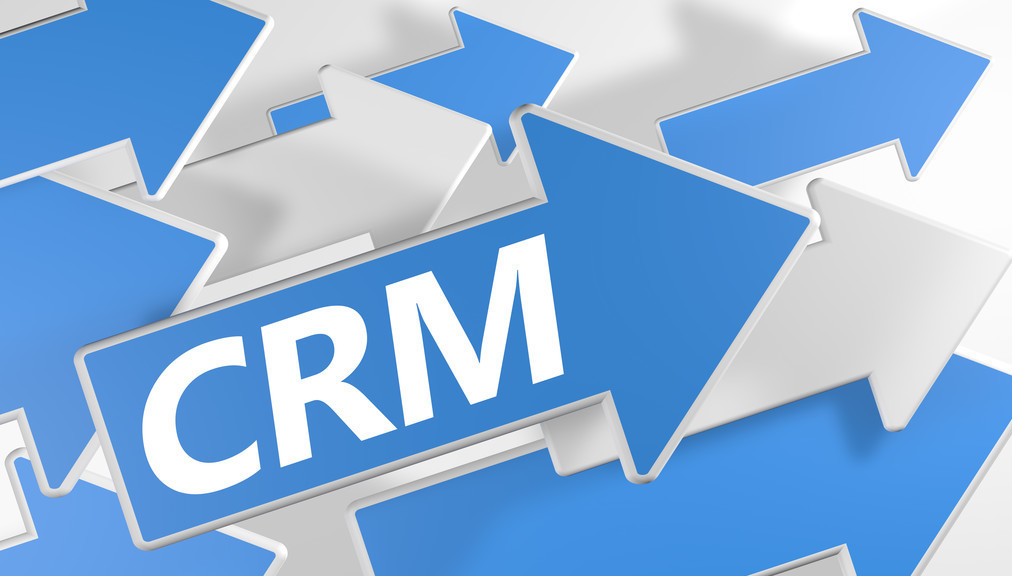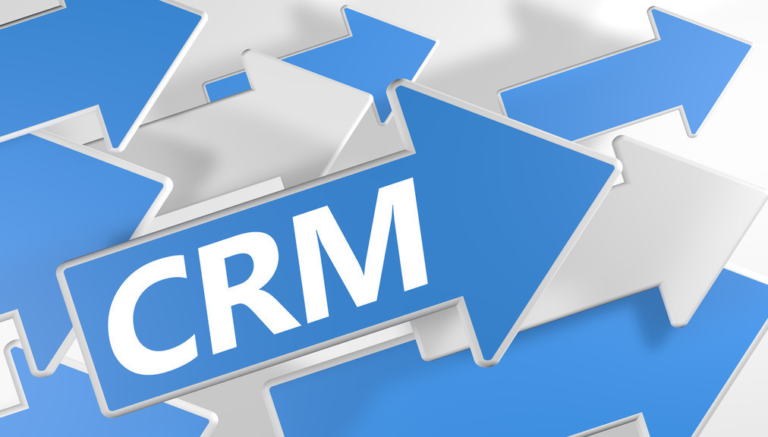
What is a marketing automation platform? 3 marketing automation platform recommendation。
By Kailey | Marketing AutomationWhat is a marketing automation platform? 3 marketing automation platform recommendation。
- Kailey
- 2023-06-05
What is a marketing automation platform? 3 marketing automation platform recommendation, let enterprise marketing twice the result with half the effort。
The value of a marketing automation platform
2.1 Service pain points
1) Unintegrated data: ️ has accumulated a large amount of member data and customer data, but it has not been effectively integrated
2) Extensive management: marketing activities are still wide-spread and extensive, with high cost and even aversion to customers
3) Business risk: The whole life cycle of customers is relatively dependent on labor, which leads to the risk of human departure and high labor cost
4) Low marketing efficiency: marketing execution relies on manual labor and cannot efficiently execute multiple marketing scenarios at the same time; In the process of marketing development, real-time insight is not timely, unable to timely capture the marketing dynamics
5) Effect evaluation is difficult: the follow-up evaluation of marketing relies heavily on manual labor, and the pressure of data processing is great; It is not convenient to do AB test and cannot dynamically adjust the marketing plan。

2.2 Value
- Improve marketing efficiency and reduce marketing costs.
- Rich user portraits to achieve precision marketing
- Diversified contact points to achieve personalized marketing
- Rich data dimension, real-time understanding of marketing effects, capture high-quality customers
Recommended! Let the enterprise marketing with half the effort twice the result of 3 marketing automation platform
Now, the Internet traffic has become increasingly saturated, the difficulty and cost of enterprises to get customers is rising. More and more enterprises want to find ways to improve marketing efficiency, and gradually aim at some marketing automation platforms. Compared with traditional marketing, using marketing automation platform for marketing activities has many advantages, such as tracking the data obtained by the whole process and all channels, automatically executing repetitive operations that used to cost a lot of manpower, and more refined operation and transformation of clues.
For those enterprises that are still in the preliminary stage of understanding marketing automation, how to choose the right platform in the complicated market environment? What are the hot marketing automation platforms? What are their respective characteristics? Hope the following content can give you some reference.
1 Marketo
Marketo is a relatively mature marketing automation platform, which is most suitable for medium-sized enterprises with a large demand for marketing functions.
The main functions of the platform include marketing automation (improve marketing efficiency and conversion rate through automatic grouping of users and automated marketing plans), AI prediction and data expansion system (recommend content corresponding to visitors through data supplement, user behavior tracking and AI prediction), marketing data BI system (connect various data in enterprise marketing process, Form visual data Kanban, carry out ROI tracking, improve enterprise decision-making ability).
It is worth mentioning that it is a single tool that provides email automation. But it can take full advantage of email automation by integrating with other tools, so Marketo supports a wide range of interfaces and a freer experience. For example, it integrates well with Salesforce, and many of its marketing solutions are ready-to-use.
2 HubSpot
Like Marketo, HubSpot offers a full suite of digital marketing tools to truly participate in the marketing process, targeting marketing executives at small and medium-sized businesses with 10 to 1,000 employees.
The platform functions cover three categories, the first is always centrally located automated marketing system, which provides SEO, social media, web page production and optimization, website scoring and other tools products; The second is CRM, which visualizes data and automatically tracks customer behavior. Finally, there is the sales system, which serves as a tool to connect sales people with customers.
One of its biggest highlights is that it provides some free functions related to CRM. However, because it is free, it still has fewer functions compared with professional CRM systems. In order to get a better experience, you may have to buy other products of his family.
3 Iparllay
The platform is one of the marketing automation platforms in the Chinese market, providing one-stop SCRM marketing automation solutions to help enterprises succeed in gaining customers, mainly for large and medium-sized enterprises in the B2B and B2C industries.
The platform is further divided into three functional categories: Marketing automation platform (an all-channel customer acquisition tool for potential customer cultivation and MA all-channel interaction at the same time), social sales platform (social communication between sales team and customers, intelligent social sales tool based on enterprise marketing), system docking platform (data automation, social data docking and integration with data from other three platforms).
The core of iparllay to maintain its competitiveness lies in the stability of its products, the strong openness of its platform and the constant updating and accumulation of customer cases.

what is inside sales?
- Kailey
- 2023-04-27
Internal sales refers to the sales activities between employees within a company, in which one department or team sells the company’s products or services to another department or team. Typically, internal sales occur as interactions between different departments in an organization to meet the overall business goals of the company.
Internal sales can happen at various levels within a company, including different departments, branches, or different business units. For instance, the sales team can sell products to the production team and ensure that the production team can manufacture and deliver the products on time, or the marketing team can provide potential customer lists to the sales team and help them better understand customer needs.
The purpose of internal sales is to coordinate the work of different departments, improve organizational collaboration efficiency, and business performance. Through internal sales, different teams can better understand each other’s needs and work, better meet customer needs, increase sales revenue, and ultimately improve the company’s performance.

Here are several ways to improve internal sales performance:
Establish clear internal sales processes and standards: Establishing clear internal sales processes and standards can help ensure smooth cooperation between the sales team and other departments, thereby improving sales efficiency and accuracy. The processes and standards should clearly outline the responsibilities and objectives of sales and service and provide guidance and support for collaboration between teams.
Strengthen internal communication and collaboration: Internal sales require close collaboration between different teams, so strengthening internal communication and collaboration is critical. The sales team needs to understand the needs and goals of other teams to better coordinate work. In this regard, using team collaboration tools and regular communication meetings can effectively promote communication and collaboration.
Establish internal sales incentive mechanisms: Setting up incentive mechanisms for the internal sales team can help stimulate their motivation and initiative, thereby improving performance. Incentives can include bonuses, promotions, and other forms of benefits.
Provide employee training and development opportunities: Providing employee training and development opportunities can help them improve their sales skills and knowledge level, thereby improving internal sales performance. Training can involve product knowledge, sales techniques, customer service, and communication skills, among other aspects.
Focus on customer satisfaction: The ultimate goal of internal sales is to provide value to customers, so focusing on customer satisfaction is crucial for improving performance. Understanding customer needs and feedback, and providing timely responses and solutions to their problems and needs can improve customer satisfaction and loyalty.
By adopting these methods, companies can improve internal sales performance, thereby achieving higher business goals and increasing profits.

Does it worth to have the WeChat-CRM at the beginning?
- Kailey
- 2023-04-27
The formula for calculating the customer churn rate is as follows:
Customer Churn Rate = (Number of Customers Lost ÷ Total Number of Customers at the Beginning) × 100%
Here, “Number of Customers Lost” refers to the number of customers who no longer conduct business with your company during a certain period, and “Total Number of Customers at the Beginning” refers to the total number of customers during the same period.
For example, if your company had 1,000 customers at the beginning of a quarter, but at the end of the quarter, 100 customers no longer conducted business with your company, then the customer churn rate would be:
(100 ÷ 1,000) × 100% = 10%
Therefore, in this quarter, your company’s customer churn rate is 10%.
It should be noted that this formula is a basic method for calculating customer churn rate, but in practical applications, it may need to be adjusted and modified according to different business situations and industry characteristics.

How to calculate the customer revenue churn rate?
Customer revenue churn rate refers to the percentage of revenue loss caused by customer churn within a certain period. The formula for calculating customer revenue churn rate is as follows:
Customer Revenue Churn Rate = (Total Revenue Lost from Churned Customers ÷ Total Revenue) × 100%
Here, “Total Revenue Lost from Churned Customers” refers to the total revenue lost from all churned customers during a certain period, and “Total Revenue” refers to the total revenue generated by all customers during the same period.
For example, in a month, your company’s total revenue is $10,000, including revenue from 50 customers. At the end of the month, you found that 5 customers no longer conducted business with your company, and the total revenue lost from these customers is $500. Then, the customer revenue churn rate would be:
(500 ÷ 10,000) × 100% = 5%
Therefore, this month, your company’s customer revenue churn rate is 5%.
It should be noted that customer revenue churn rate can help you better understand the impact of customer churn on company revenue, but it also needs to be analyzed in conjunction with other indicators to better formulate countermeasures.

The Top 4 Marketing Strategies for China in 2023?
By Kailey | IParllay Marketing Blog, Marketing Automation, Marketing in China, WeChat MarketingThe Top 4 Marketing Strategies for China in 2023?
- Kailey
- 2023-03-30
China has become one of the most important and attractive markets in the world because it is continuously growing. With a population of over 1.4 billion people and a fast-paced economy, China is an attractive destination for businesses to expand and reach a new customer base. Although there are many opportunities for business to expand in China, challenges also need to be considered. Just as the saying goes, where is an opportunity, where is the challenge. Therefore, marketing to China requires a unique approach that is different from marketing in other countries to deal with challenges. In this article, we will provide you with the top 4 marketing strategies for China in 2023.
- Leverage WeChat for Business
WeChat, with over 1 billion monthly active users, is the most popular social media app in China. It is more than just a messaging app, as it also serves as a payment platform, and various mini-programs and the function of official account are also available. Leveraging WeChat for business is a necessary strategy for any business looking to market in China. Then how to use those functions? To create a WeChat account, you need to download the app and sign up with a Chinese phone number. You can create an official account and a mini-program to showcase your products or services. WeChat also provides a social media platform where you can share content and interact with your followers. WeChat payment not only improve the sales efficiency of business but is helpful to collect leads. Another effective marketing strategies on WeChat is to use KOLs (Key Opinion Leaders) to promote your products or services. KOLs are influencers who have a large following on social media platforms. Collaborating with KOLs can help increase your brand exposure and reach a wider audience.
- Utilize B2B Digital Marketing Agencies
If you are looking to market your products or services to other businesses in China, then you should consider utilizing B2B digital marketing agencies. B2B digital marketing agencies specialize in providing customized marketing solutions to businesses that want to market their products or services to other businesses. B2B digital marketing agencies can help you identify your target audience, create a content marketing strategy, and implement marketing campaigns that are tailored to the needs of your business. They can also help you track and measure the success of your marketing campaigns, allowing you to adjust your strategy if necessary. When choosing a B2B digital marketing agency, it is important to choose a reputable and experienced agency that has a deep understanding of the Chinese market. Look for agencies that have a strong portfolio and positive reviews from their previous clients.

- Focus on Content Marketing
Content marketing is a crucial marketing strategy for businesses in China. It involves creating and sharing valuable content to attract and engage your target audience. The goal of content marketing is to build brand awareness, establish credibility, and drive customer engagement. When creating a content marketing strategy for China, it is important to take into account the cultural differences and preferences of your target audience. Chinese consumers prefer content that is visually appealing, easy to read, and informative. They also prefer content that is personalized and relevant to their interests. To create a successful content marketing strategy in China, you should focus on creating high-quality content that resonates with your target audience. The content that you can create includes blog posts, videos, infographics, and social media content. You should also promote your content through social media platforms like WeChat, Weibo, and Douyin to increase your reach. Despite of high-quality content, it still needs to be promoted on various media platform for more attention. Nowadays, the speed of spreading information is so fast that it’s necessary to take advantage of tools to push the content that we want to share to avoid being flooded.
- Optimize for China’s Search Engines
China has its own search engines, such as Baidu, which dominates the most of China’s market share. If you want to be visible to your target audience in China, you need to optimize your website and content for a better rankings on these search engines. To optimize your website for Baidu, you should focus on on-page and off-page SEO. On-page SEO includes optimizing your website’s structure, content, and meta tags. Off-page SEO includes link building and social media marketing.
When creating content for a better ranking on Baidu, you should focus on creating content that is relevant to your target audience and includes the keywords that your audience is searching for. Those elements will help your content appear in the search results when your target audience is looking for information about your products or services. In addition to optimizing your website and content for Baidu, you should also consider using paid search advertising to increase your visibility. Baidu offers a range of advertising options, including paid search ads and display ads, which can help you reach your target audience and increase your brand exposure.
Conclusion
Marketing to China requires a method that is suitable for Chinese market. Culture difference and preference of Chinese customers are all elements that customers can’t neglect. Besides professional investigation, some products can also help companies to get familiar with those elements quickly. By leveraging WeChat for business, utilizing B2B digital marketing agencies, focusing on content marketing, and optimizing for China’s search engines, you can effectively reach your target audience in China and grow your business. When implementing these marketing strategies, it is important to monitor and measure the success of your campaigns and adjust your strategy if necessary. Working with experienced digital marketing agencies can help you navigate the Chinese market and create a successful marketing strategy that drives results for your business.
If you are looking to expand your business into the Chinese market, then you need to develop a comprehensive marketing strategy that takes into account the unique needs and preferences of your target audience. By utilizing the top 4 marketing strategies for China in 2023, you can effectively reach your target audience and grow your business in this exciting and dynamic market.

What are B2B solutions?
By Kailey | HubSpot, IParllay Marketing Blog, Marketing Automation, Marketing in ChinaWhat are B2B solutions?
- Kailey
- 2023-03-13
B2B solutions refer to products, services, or software designed for businesses to use when interacting with other businesses. B2B stands for “business-to-business,” which means that these solutions are created to help companies better conduct their operations, particularly in areas such as sales, marketing, logistics, and procurement.
Examples of B2B solutions include: Customer Relationship Management (CRM) software – this is designed to help businesses manage their interactions with customers, including sales, marketing, and customer service. Enterprise Resource Planning (ERP) software – this helps companies manage their day-to-day operations, including financials, supply chain, and human resources.
Supply Chain Management (SCM) software – this helps businesses manage their supply chain, including procurement, inventory management, and logistics. Marketing automation software – this helps businesses streamline and automate their marketing campaigns, including email marketing, social media marketing, and lead generation.
Payment processing solutions – these are designed to help businesses process payments from other businesses, including credit card payments, electronic fund transfers, and more.
B2B (business-to-business) solutions refer to products, services, or technologies that are designed to help companies and organizations do business with one another. These solutions are created to meet the needs of businesses and are often more complex than consumer-oriented products.
B2B solutions can cover a wide range of products and services, including software, cloud-based services, professional services, consulting, logistics, and supply chain management, among others. B2B solutions are often designed to help businesses streamline their operations, reduce costs, and increase productivity. They can also help companies manage their relationships with suppliers, customers, and partners, and improve communication and collaboration.

Examples of B2B solutions include enterprise resource planning (ERP) software, customer relationship management (CRM) software, supply chain management software, and marketing automation platforms. These solutions are often sold to other businesses through direct sales, resellers, or other distribution channels.
B2B (Business-to-Business) solutions refer to products, services, or technologies designed to meet the specific needs of businesses, organizations, or government agencies. These solutions are typically developed by companies that specialize in providing products or services to other businesses rather than to consumers. B2B solutions can include a wide range of products and services, including software, hardware, professional services, financial services, logistics and supply chain management, human resources and talent management, and marketing and advertising services. For example, B2B software solutions can include customer relationship management (CRM) software, enterprise resource planning (ERP) software, and supply chain management software. B2B financial services can include banking, insurance, and investment services designed for businesses.
B2B solutions refer to business-to-business solutions, which are products or services designed to support the needs of businesses that are selling to or collaborating with other businesses.
B2B solutions can include a wide range of offerings, such as software platforms, marketing tools, supply chain management systems, and professional services. B2B solutions are typically created to help businesses improve their operational efficiency, reduce costs, streamline processes, and ultimately increase revenue. These solutions may be sold directly to businesses by a provider, or they may be part of a larger suite of offerings provided by a business solutions provider.
Examples of B2B solutions include customer relationship management (CRM) software, procurement and sourcing platforms, marketing automation tools, and logistics and transportation management systems. B2B solutions can also include professional services such as consulting, training, and technical support. Overall, B2B solutions are critical for businesses to operate efficiently and effectively in today’s competitive environment. They enable businesses to streamline their operations, better manage their relationships with other businesses, and ultimately drive growth and success.

How to effectively market in China?
By Kailey | IParllay Marketing Blog, Marketing Automation, Marketing in China, WeChat MarketingHow to effectively market in China?
- Kailey
- 2023-03-06
China, with a population of over 1.4 billion people, becomes a massive market full of business opportunities in entrepreneurs’ eyes. The country’s economy has been growing rapidly over the past few decades, and it is now the world’s second-largest economy. China’s booming economy makes it an attractive target for businesses looking to expand their global reach. Just as the saying goes, where demands are, where markets are. When more and more Chinese people become rich and can afford a lot of things, there are increasingly demands in market. China, with a large population, naturally becomes an ideal choice where companies want to expand their business. However, China’s unique culture, language, and business environment can pose challenges for foreign companies looking to market their products or services effectively in the country. Opportunity and Challenge are always exist meantime. The business that can gasp valuable opportunities must have the courage to overcome all of barriers. Besides that, the capability to capture latest information and to use it in practice is the key to stand out in fierce competitions. In this article, some marketing advice in China will be given to guide businesses market themselves effectively.
Investigation on Marketing to China
Before attempting to promote a product or service in China, it is essential to take an investigation about the market information in China and understand the culture, language, and consumers’ behavior of China. One of the most important factors that businesses need to consider is the country’s language when marketing in China. Although many Chinese people can speak English, it is essential to be able to communicate effectively in Chinese. It is particularly important when it comes to branding and messaging, as cultural nuances and linguistic subtleties can significantly impact how a product or service is perceived. Another essential aspect of marketing in China is to understand the country’s unique digital landscape. China has a highly developed online ecosystem and many of its citizens are using social media and e-commerce platforms that are not commonly used in the Western world. Social Platforms, such as WeChat, Weibo, and Douyin (the Chinese version of TikTok), are essential channels for marketing in China. Each platform has its own features and functions, which all need to be analyzed carefully before making a decision. China is a diverse and complex country, with many regions, different dialects, and subcultures, so it is vital to collect detailed information on the market in which you want to enter.

Localize Your Brand
Businesses must consider the way to localize their brand and messaging in China. To adapt to China’s environment, businesses not only need translate their marketing materials into Chinese but also need to be familiar with local culture. The translation of brand information is the first step to improve brand awareness in a strange environment, but it is not only the transformation between two languages. A good translated version is based on the mastery of cultures. Therefore, culture is the element that companies can neglect in the process of marketing to China. When it comes to branding, companies must pay attention to Chinese people’s attitude towards to their brands and logos. For example, certain colors and symbols have totally different connotations in China. Red is a popular color in China because it is associated with good luck and prosperity, while black is often associated with death and mourning. In such a situation, some elements of your logo or brand ads should be adapted to avoid cultural conflicts. High quality translation and mastery of culture is just the ground of making a successful localized strategy. It’s proved that a companies’ make a successful strategy when its brand arises resonation of target audience just as it does in the local country.
Partner with Local Influencers
Influencer marketing is the product of the popularity of social media. With the appearance of various social platforms, more and more people transfer their communications from offline to online. Nowadays, they like to communicate on those platform no matter in life or at work and often spend most of their time on social platforms. Of course, they not only communicate on these platforms but also share anything interesting. Moreover, people even tend to deal with their work on social channels sometimes because the functions of social platforms becomes stronger. Gradually, some people who often share their experience and general knowledge in a certain field attract attention from a batch of users. They often output some high quality content to help some people solve problems or share some wonderful opinions to inspire readers to think deeply. These people are KOL or influence of social media. A large follower base enable them to help bands improve their customer awareness promptly. That’s the reason why more and more companies choose to cooperate with some influencer on social media. Influencers of social media have obtained trust from customers through their efforts in a long term. Therefore, the information that they post are easier to be believed by users. What’s more,their numerous followers help brands uplift their exposure rates in a short time. China has social media influencers with millions of followers. Partnering with local influencers can be an effective way to reach Chinese consumers and build brand awareness.
WeChat Mini Programs and Official Accounts
WeChat is a popular social media platform in China, and it is an essential channel for marketing in the country. Over one billion monthly active users enable WeChat to become one of the most popular social platforms in China. Moreover, its user base is still increasing year by year. The reason why the users of WeChat has increased continuously is that more and more functions of it are developed. Among various functions, WeChat Mini Programs and Official Accounts are often used for marketing and brand promotion by companies. WeChat mini programs are lightweight apps that can be used within the WeChat platform but not take up the memory of smartphones, which provides convenience for people who often need use smartphone to deal with some trivial work and have to download lots of Apps. For better brand awareness, most companies choose to develop its own WeChat mini program and form its own brand community in WeChat ecosystem. Through their own WeChat mini program, they can promote their products and interact with customers directly, which is also a good way to improve customers’ loyalty. WeChat Official accounts is another service of WeChat. Businesses can post product information and create some high quality content to present the features and advantages of products or services. If you don’t have a detailed concept about it, you can deem it as a Facebook pages where content, promotions, and customer service and be shared.
In conclusion, effectively marketing in China requires a deep understanding of the local market, culture, and language, as well as a tailored strategy. Businesses looking to expand their reach in China should consider partnering with local influencers and adapt to local social media channels, leveraging the power of WeChat to engage with customers and promote their products or services.
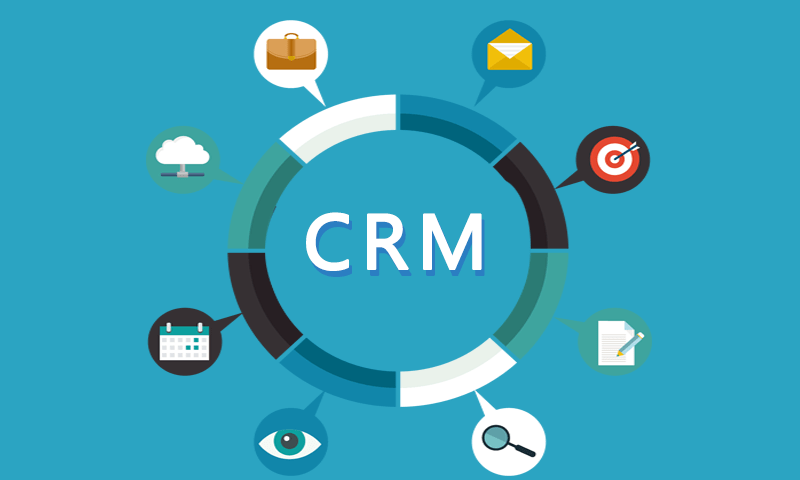
What are the benefits of using CRM?
By Kailey | IParllay Marketing Blog, Marketing Automation, Marketing in China, WeChat MarketingWhat are the benefits of using CRM?
- Kailey
- 2023-03-03
Customer Relationship Management (CRM) is a powerful tool that helps businesses achieve these goals by organizing, automating, and synchronizing their customer interactions. CRM software is designed to manage customer interactions across different channels and touchpoints, including email, phone, social media, and in-person interactions. The benefits of using CRM are numerous and can have a significant impact on a company’s bottom line.
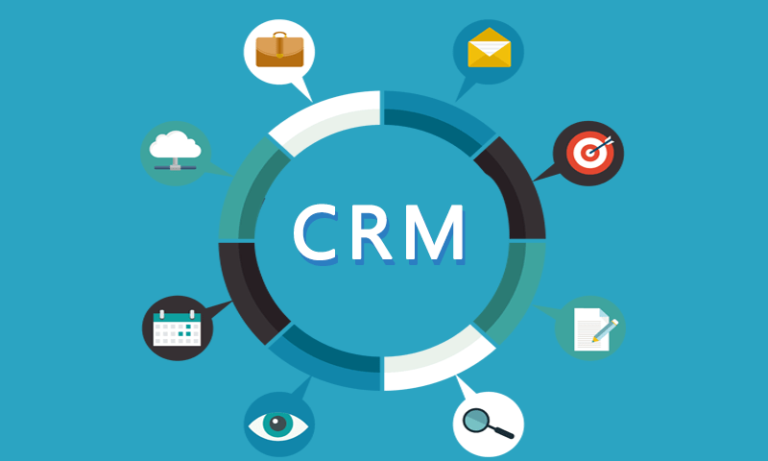
A: CRM systems help businesses build and maintain strong relationships with their customers by providing a 360-degree view of customer interactions, preferences, and history. This information can be used to provide personalized services and experiences, which can lead to increased customer loyalty and retention.
B: CRM systems automate repetitive tasks such as lead management, sales forecasting, and customer support. This can free up time for employees to focus on higher-value tasks and improve productivity.
C: A CRM system provides a centralized platform for managing customer data, which can improve collaboration and communication among teams. This can lead to better teamwork and more effective problem-solving.
D: CRM systems can help businesses improve their sales performance by providing insights into customer behavior and preferences. This can enable sales teams to identify new opportunities and tailor their approach to better resonate with customers.
E: CRM systems can help businesses provide better customer service by providing quick access to customer data, which can help resolve issues faster and improve the overall customer experience.
F: By improving customer relationships, efficiency, collaboration, sales performance, and customer service, CRM systems can help businesses increase revenue and profitability.
How to do?
To implement a CRM system, businesses should follow these steps:
A: The first step is to identify the specific business goals that the CRM system should support. This will help in selecting the right CRM system that aligns with the business objectives.
B: Analyze customer needs and preferences to identify what kind of data the CRM system should collect and how it should be used to deliver personalized services.
C: Based on the business goals and customer needs, select the right CRM system that meets the requirements. Consider factors such as cost, ease of use, scalability, and integration with other business systems.
D: Once the CRM system is selected, customize it to meet the specific needs of the business. This may involve configuring workflows, designing data fields, and integrating with other business systems.
E: Train employees on how to use the CRM system effectively. This can include training on data entry, customer segmentation, lead management, sales forecasting, and customer service.
F: Continuously monitor the performance of the CRM system and optimize it based on feedback from employees and customers. Regularly review data quality, user adoption, and system usage to ensure the system is delivering the intended benefits.
at all , CRM systems provide businesses with a comprehensive view of their customers and enable them to deliver personalized services and experiences. This can help businesses build stronger customer relationships, improve efficiency, collaboration, sales performance, customer service, and increase revenue.
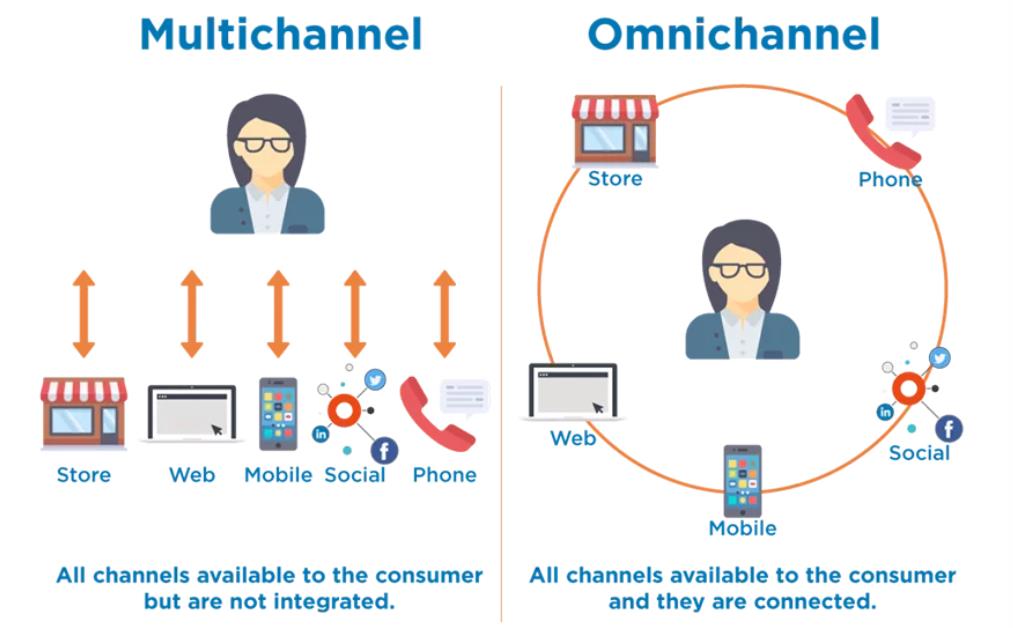
what is omni-channel marketing?
By Kailey | IParllay Marketing Blog, Marketing Automation, WeChat Marketingwhat is omni-channel marketing?
- Kailey
- 2023-02-27
In today’s digital age, customers are no longer confined to just one channel for interacting with brands. They can interact with businesses on multiple platforms such as websites, social media, mobile apps, and physical stores. With so many touchpoints available, it is becoming increasingly difficult for businesses to provide a seamless experience to customers. That’s why omni-channel marketing is proposed. Then what omni-channel marketing on earth and how does it assist businesses to reach customers successfully? In this article, you can have the opportunity to get know about omi-channel marketing from comprehensive perspectives.
Definition of omni-channel marketing
Omni channel marketing is a strategy that businesses use to provide a seamless and consistent experience for customers across all touchpoints. It involves integrating all the channels that customers use to interact with your brand together in a cohesive way. Those channels integrated under the strategy of omni-channel marketing include official website, mobile app, social media, email, physical store, and any other channel that customers may use. The strategy has become increasingly important in the modern business world, as customers are more likely than ever to switch among different channels when they purchase something they need.
The Benefits of Omni-Channel Marketing
Omni-channel marketing benefits customers and businesses a lot. For customers, it provides a seamless and convenient shopping experience across all channels. Customers can browse products online, choose the one that attract them the most and remember the information about it. Then they can visit the brand’s physical store to try out the product that they selected online previously ,have a real experience of the product,and make a comparison between the platform online and offline before they make a purchasing decision. With the support of omni-channnel marketing strategies, customers can enjoy a consistent experience and make a wiser purchasing choice in the shortest time and at the lowest cost.
For businesses, omni-channel marketing can help to increase sales and improve customer loyalty. By providing customers with a seamless experience across all channels, businesses can establish a good image in customers’ mind, obtain trust from customers, and retain old customers easier. In addition, omni-channel marketing can help businesses to reach more new customers and increase brand awareness by expanding their reach across diverse channels. Nowadays, with the development of information and the popularity of the Internet, more and more customers are accustomed to browsing various platforms and obtaining information from multiple channels. Therefore, Omni-channel marketing strategy is a good opportunity for business to improve brand’s exposure, which is helpful to be remembered by more customers and becomes their potential choice gradually.
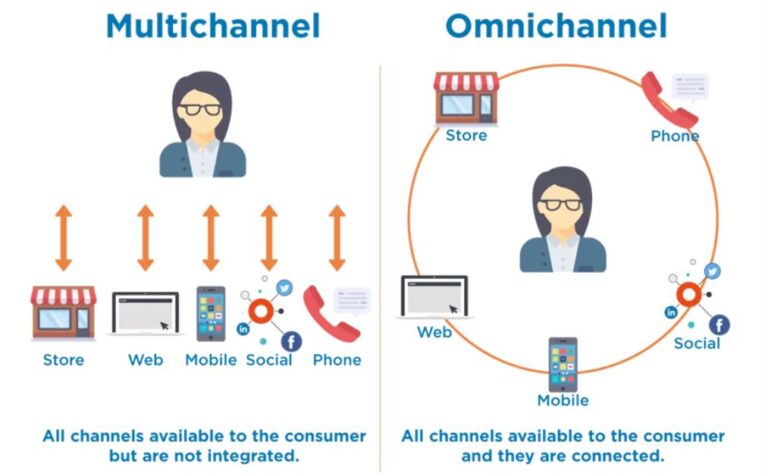
How Omni-Channel Marketing Works
Omni-channel marketing involves integrating all channels that a business uses to interact with customers, including online, mobile, in-store, and social media. The goal is to provide a consistent and seamless experience across all these channels so that customers can interact with the brand in the way that suits them best. To reach the goal, businesses need to develop a strategy that covers all touchpoints that a customer might have with their brand. These touchpoints include everything from online advertising, social media marketing to in-store displays and customer service. The core of omni-channel marketing is to use data for a better understanding of customers and their preferences. By tracking customer interactions across all channels, businesses can gain insights into what their customers want and tailor their marketing messages accordingly. For example, a business might use data to identify that a particular customer prefers to browse products online before making a purchase in-store. The business can attract the customer through tailored advertising and offers and ensures that the customer’s in-store experience is consistent with what she saw online. Omni-channel strategies can help business track the journey of customers on all touchpoints in a real-time way, output a database about each customers, and supply a reference for the design of detailed promotion strategies. Eventually, the business can reach a high conversion rate effectively.
Implementation of Omni-Channel Marketing
- Implementation of Omni-channel marketing can be a complex and challenging process, but it is essential for businesses that want to remain competitiveness in the modern marketplace. Here are some steps that businesses can take to implement omni-channel marketing effectively:
- Analyze your customer data: Identify the different touchpoints that customers have with your brand by analyzing your customer data, which includes activities from the browse of brand website, the visit of physical stores to the interaction with brands on social media.
- Develop a strategy: Based on your analysis, develop a strategy that covers all the different touchpoints, which might involves investing in new technologies or marketing channels, such as mobile apps or social media advertising.
- Build a unified customer experience: Create a unified customer experience across all channels so that customers can switch among multiple platforms freely. To provide a consistent experience for customers, the business need use consistent branding and messaging, as well as ensuring that customers can easily access the same products and services across different channels.
- Train your staff: Train your staff to deliver a consistent customer experience across all channels so that customers feel to be supported and valued no matter how they choose to interact with your brand.
- Monitor your results: Use data to monitor your results and identify areas where you need to improve. It might involve tracking customer feedback or using analytical tools to measure the effectiveness of your marketing campaigns.
Conclusion
Omni-channel marketing is an essential strategy for businesses that want to provide a seamless and consistent experience for their customers across all channels. By integrating all the different touchpoints that customers have with their brand, businesses can build trust and encourage repeat purchases, as well as reaching new customers and increasing brand awareness. However, the implementation of omni-channel marketing can be a complex process, requiring careful analysis of customer data, the development of a unified customer experience, and the training of staff to deliver consistent messaging and branding. In today’s highly competitive business environment, it is no longer enough to simply provide good products or services. Customers are looking for a seamless and convenient shopping experience, and businesses that fail to deliver it risk falling behind their competitors. By implementing omni-channel marketing, businesses can meet the expectations of their customers, improve customer loyalty, and promote the growth of conversion.

What are Analytical CRM Tools?
- Kailey
- 2023-02-20
In today’s fast-paced business environment, keeping up with your customers’ needs and preferences can be challenging. That’s why Analytical Customer Relationship Management (CRM) tools are developed. Analytical CRM tools are designed to help businesses better understand their customers, provide them with the best customer experience, and ultimately increase their revenue. In this article, we’ll explore what Analytical CRM tools are, how they work, and how they can help you streamline your workflow and boost your marketing automation efforts.
Definition of Analytical CRM Tools
Analytical CRM tools are designed to help businesses analyze customer data to gain insights that can be used to improve relationships between firms and customers and drive business growth. These tools help businesses understand their customers’ behaviors, preferences, and needs, which can be used to tailor marketing efforts to specific audiences later. They are often used to help business collect the information about customers and locate target customers accurately.
How Do Analytical CRM Tools Work?
Analytical CRM tools analyze customer data that is collected through various channels, such as email marketing campaigns, social media interactions, and website activity. The data is consolidated and analyzed by advanced analytics tools to provide businesses with insights into their customers’ behaviors and preferences. The insights gained from Analytical CRM tools can be used to plan personalized marketing campaigns that are targeted to specific customer segments. For example, if a business notices that a certain segment of customers is more likely to respond to email marketing campaigns, they can plan targeted campaigns that cater to that segment.

What are the Benefits of Analytical CRM Tools?
There are many benefits of using Analytical CRM tools in your business. Here are just a few:
- Streamlined Workflow: By automating the analysis of customer data, businesses can save time and streamline their workflow. This allows businesses to focus on other important tasks, such as creating and launching marketing campaigns. The final aims of companies are to obtain customers’ preference and improve conversion. The collection and analysis of data is just the approach to reach final aims. However, companies need to make efforts in the process of improving conversion, which will took much time and energy. Analytical tools help firms to shorten the process through a streamlined workflow.
- Marketing Automation: Analytical CRM tools can be integrated with workflow marketing automation tools to create personalized campaigns that are targeted to specific customer segments. This can help businesses improve their conversion rates and drive revenue growth. Marketing automation based on the data from analytical CRM tools improve the efficiency of marketing and help firms to reach the best effect in the shortest time.
- Improve Customer Experience: Analyzing customer data can help businesses understand their customers’ needs and preferences, which can be used to create personalized customer experiences. This can lead to higher customer satisfaction and loyalty. Customers are the god, therefore, the success of a firm depends on the satisfaction of customers. Aims of any companies are to obtain more and more customers and leave a good impression on customers.
- Better Customer Relationships: By understanding their customers’ behaviors and preferences, businesses can build better relationships with them. A good relationship with customers is helpful to increase customer retention and revenue.
Analytical CRM tools provide businesses with a comprehensive understanding of their customers. This information can help businesses tailor their marketing campaigns to specific customer segments, creating personalized experiences that resonate with customers and drive engagement. By analyzing customer data from multiple sources, such as email campaigns and social media interactions, analytical CRM tools provide businesses with a comprehensive view of their customers. This comprehensive understanding can help businesses create more effective marketing campaigns that target specific customer segments based on their interests, behavior, and preferences. Analytical CRM tools can help businesses identify new opportunities for growth. By analyzing customer data, businesses can uncover trends and patterns that can be used to identify new market segments. This can help businesses expand their customer base and increase revenue.
What are Workflow Marketing Automation Tools?
Workflow marketing automation tools are designed to help businesses automate marketing processes to save time and improve efficiency. These tools can be integrated with Analytical CRM tools to create personalized marketing campaigns that are targeted to specific customer segments.
Workflow marketing automation tools work by automating various marketing processes, such as lead generation, email marketing campaigns, and social media marketing campaigns. These tools can help businesses save time and improve their conversion rates by providing targeted marketing campaigns to specific customer segments.
How Can Analytical CRM Tools and Workflow Marketing Automation Tools Work Together?
Analytical CRM tools and workflow marketing automation tools are designed to work together to provide businesses with a seamless workflow that can help them improve their marketing efforts. Here’s how these tools can work together:
- Collect Data: Analytical CRM tools can collect customer data from various channels, such as email campaigns and social media interactions.
- Analyze Data: Analytical CRM tools can analyze the collected data to gain insights into customer behavior and preferences.
- Create Targeted Campaigns: Workflow marketing automation tools can use the insights gained from Analytical CRM tools to create campaigns that are personalized to specific customer segments.
- Launch Campaigns: Workflow marketing automation tools can launch the targeted campaigns to the appropriate customer segments, which can help businesses improve their conversion rates and drive revenue growth.
- Track Campaign Performance: Workflow marketing automation tools can track the performance of the targeted campaigns, providing businesses with valuable insights into the effectiveness of their marketing efforts.
- Analyze Results: Analytical CRM tools can analyze the results of the targeted campaigns, providing businesses with additional insights into customer behavior and preferences.
- Refine Campaigns: Based on the insights gained from Analytical CRM tools, businesses can refine their marketing campaigns to better target specific customer segments and improve their overall marketing effectiveness.
Conclusion
By integrating Analytical CRM tools with workflow marketing automation tools, businesses can create a powerful marketing automation system that is designed to maximize their marketing potential. Whether you’re a small business just starting out or a large enterprise looking to optimize your marketing efforts, integrating these tools can help you streamline your workflow, improve efficiency, and drive revenue growth. So why not start today and discover the power of Analytical CRM tools and workflow marketing automation tools?

